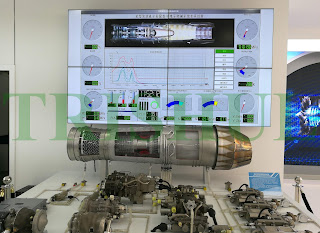The
figure of Rs.525 crore or approximately €79 million per Rafale, which the
Indian National Congress has been citing, is based on Dassault Aviation’s 2007
RFP response at the then exchange rate (€I = Rs.66) and that too for only the
18 Rafales that were to be delivered off-the-shelf by Dassault Aviation. The
2007 price for each of the 18 Rafales would have amounted in 2015 to €100.85
million (Rs.765.4 crore at 2015 exchange rate of €1 = Rs 75.90). Similarly, the
2007 bid price for every Eurofighter EF-2000 would in 2015 have worked out to
be €102.85 million, higher than that of the Rafale. In comparison, the average price
of each of the 36 “bare/green” Rafales bought in 2016 is €91.7 million (Rs.696
crore at the 2015 exchange rate), lower than both the earlier 2007 Rafale and
Eurofighter EF-2000 RFP responses. The exact price for the 28 single-seat Rafales is €91.07 million (Rs.681 crore) each; and that of each of the eight
tandem-seat Rafales is €94 million (Rs.703 crore).
Coming to unit-prices of the 108 Rafales
that were to be licence-assembled by the Bengaluru-based and MoD-owned
Hindustan Aeronautics Ltd, or HAL (the workshare agreement between HAL and
Dassault Aviation was signed on March 13, 2014), Dassault Aviation had estimated
that each HAL-built Rafale will cost 2.7 times more (including Rs. 68 crore in
labour costs alone per aircraft) than a Rafale delivered by Dassault Aviation.
This is because not only would HAL have had to upgrade its in-house airframe
fabrication and systems integration capabilities entirely through imported
hardware and expertise, but the same also would have had to be undertaken by
several of the private-sector and public-sector industrial entities that had
been identified by HAL and Dassault Aviation as vendors. These would have
included the following:
Airframe
Component Providers: fuel tanks and pylons (5 vendors), tooling hardware (12 vendors),
mechanical parts and sub-assemblies (21 vendors)
Turbofan
Component Providers: mechanical parts, tubes and pipes (5 vendors)
Avionics
Components Providers: AESA-MMR sub-assemblies,, cockpit displays (3 vendors), electronic
boards (4 vendors), automated test-benches (5 vendors)
Accessories
Providers: cabinets (3 vendors), screws and rivets (1 vendor), tubes (1 vendor),
wiring harnesses (5 vendors)
Simulator
Services Provider: 1 vendor
Ground
Support Equipment Supplier: 6 vendors
Engineering,
Software & Services: 13 vendors
Data
Conversion Service Provider: 2 vendors
MRO
Services Provider: 4 vendors
Customer-Furnished Hardware Specified For Integration With Rafale M-MRCA
All the IAF Rafales will feature 14
customer-specific modifications, comprising: 1) integration of the RAFAEL-supplied LITENING target
acquisition/designation pod; 2) integration
of the RAFAEL-supplied Spice-1000 standoff PGM and its related data-link pod; 3) integration of MBDA-supplied Meteor
BVRAAM and ALARM anti-radiation missile; 4)
integration of the RAFAEL-supplied X-Guard towed-decoy and development of its
on-board location cabinets; 5)
upgradation of the SPECTRA EW suite to accommodate low-band, medium-band and high-band
directional jammer apertures; 6) integration
of the TARGO-2 HMDS supplied by Elbit Systems (also ordered by Qatar); 7) installation of a THALES-supplied
traffic collision avoidance system (TCAS); 8)
installation of a THALES-supplied standby radar altimeter; 9) Optimisation of the M88 turbofan’s jet-fuel starter for
operating in sub-zero temperatures at altitudes above 9,000 feet ASL; 10)
increase in the capacity of the on-board OBOGS; 11) addition of weather-mapping mode of operation in the
THALES-supplied RBE-2 AESA-MMR; 12)
development of quad-pack ejectors for the DRDO-engineered and Spice-250
PGM-derived SAAW EMP-generating standoff PGM; 13) assistance in flight-qualification of DRDO-developed 450kg laser-guided
HSLD bomb and integration of the bomb’s FOG-based inertial navigation system
with the Rafale’s on-board Sigma-95N RLG-INS through a MIL-STD-1553B interface;
14) modification of the Sigma-95N
RLG-INS’ coupled GPS transceiver in order to receive MIL-STD PY-code coordinates
from India’s NAVIC/IRNSS constellation of GPS satellites.
BOTTOMLINE
Nett cost of each of the 18 fully
weaponised Rafale M-MRCA in flyaway condition as negotiated by the UPA-2
government was Rs.1,705 crore and that of each meant-to-be-licence-built Rafale
was Rs.4,603.5 crore, whereas the figure for each of the 36 flyaway Rafales now
on order works out to Rs.1,646 crore.
Contrary to the Indian National Congress’
allegations about the Dassault Reliance Aerospace joint-venture industrial
entity being the sole beneficiary/executor of the 50% indirect industrial
offsets package that forms part of the €7.87
billion (Rs.59,000 crore) Rafale M-MRCA contract, Dassault Reliance Aerospace will
only be one of several key industrial players in the execution of offset obligations.
This is because under any government-to-government contractual agreement, industrial
offset obligations are always fulfilled by respective industrial consortiums,
i.e. from the French side the consortium comprises OEMs like Dassault Aviation,
THALES and the SAFRAN Group. And THALES and the SAFRAN Group are still in the
process of finalising their industrial offsets obligations. Consequently, each
of these three French OEMs is entitled to fulfil only one-third portion of the
mandated 50% industrial offsets content.












































